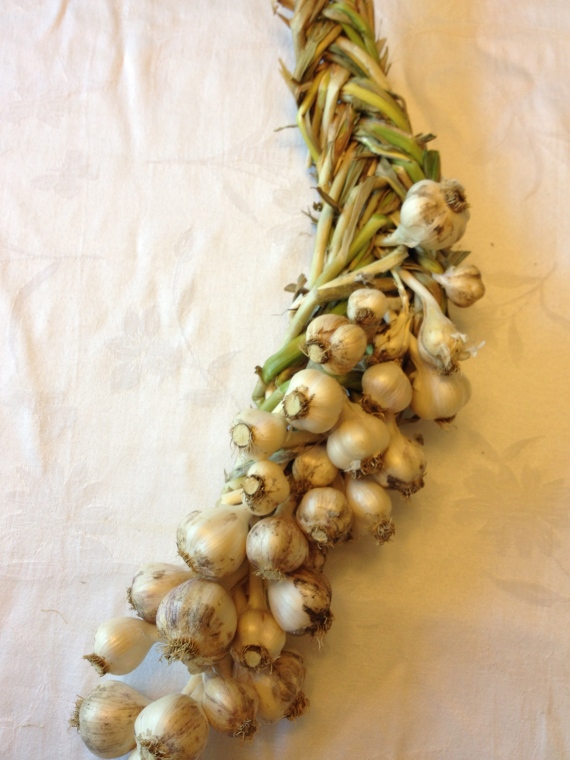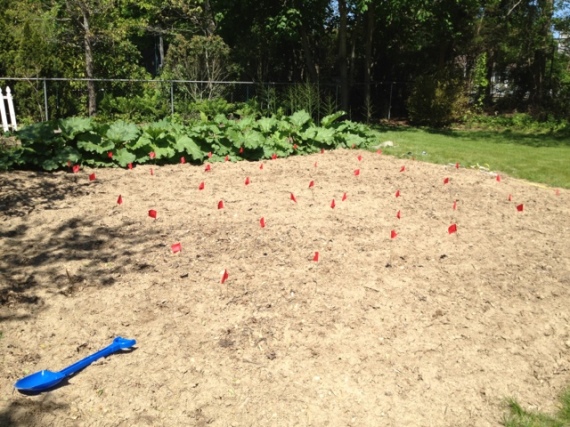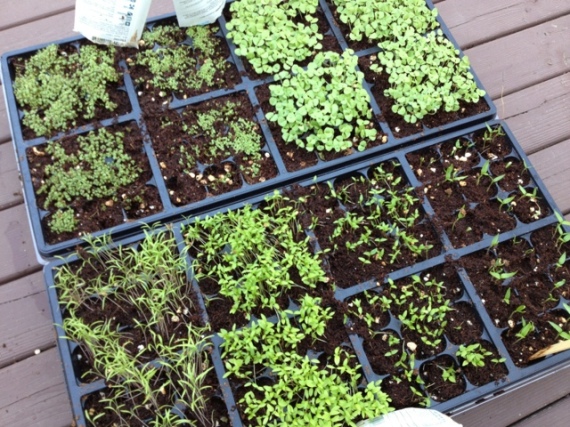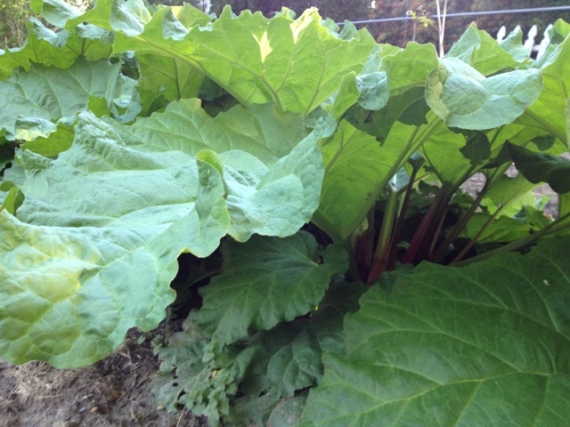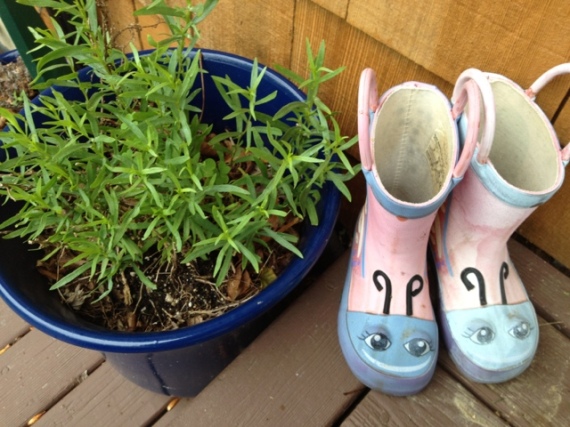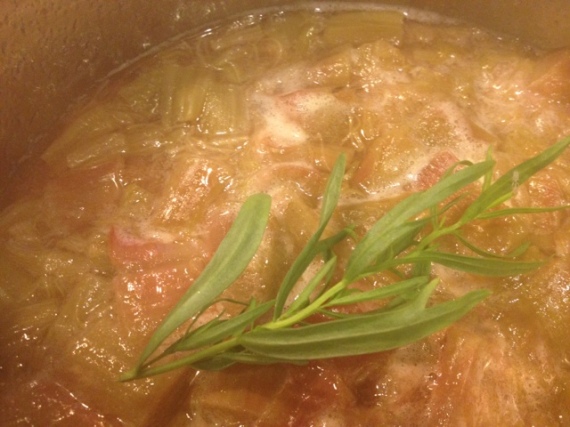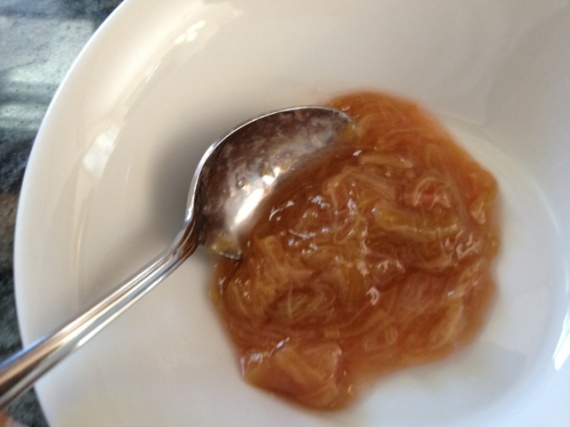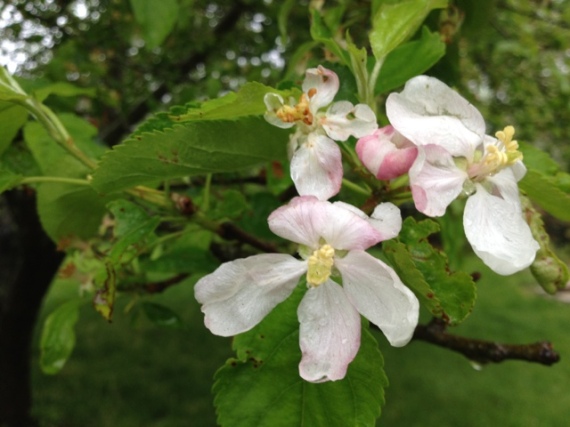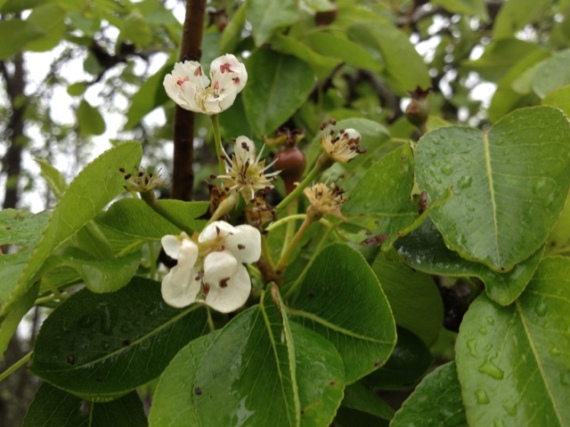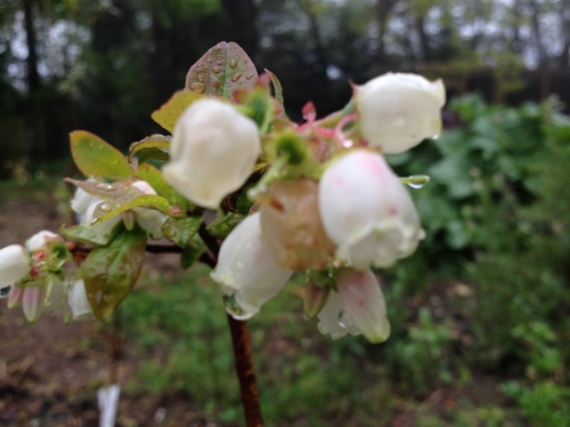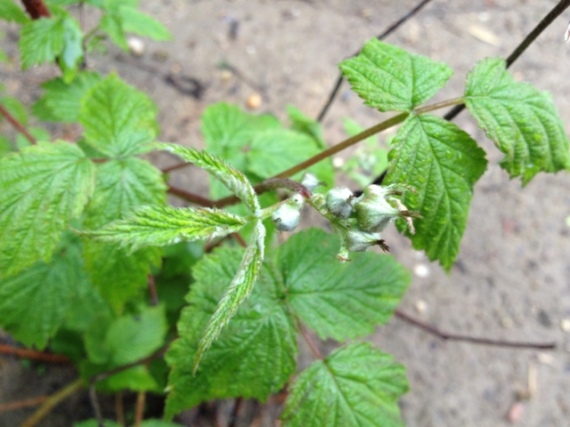The garlic was ready to harvest this week! It’s the final part of the glorious garlic cycle: Cloves planted in the fall, harvested some early bulbs for their tender garlic greens in pesto, and chopped off the flower scapes for the grill. I thought I’d try my hand at making garlic braids this year. I found this fabulous youtube tutorial for hard neck garlic and here are the results! I feel so crafty!
Archive for the ‘F(Ph)arming’ Category
13 May
Our Garden Plan… Now Almost Completely Planted
Danger of frost is not officially over in our area until later May, but the forecast predicts fair weather this week and the dogwoods are blooming, so it’s time to sow! Here’s the plan…
We’re trying something new this year for us, but the concept originally came from the Native Americans: The Three Sisters. It’s an interplanting of corn, beans, and squash. The corn provides the poles for the beans to climb, the beans provide necessary Nitrogen for future plantings, and the squash shades out weed competition. Together they all provide balanced nutrition.
This summer we are growing a modern sweet corn and a traditional Indian corn, cranberry beans and snap peas, edible pumpkins and ornamental gourds. Corn is one of those crops that our CSA doesn’t provide and besides, for the sweetest sweet corn, you need to have the water boiling before you go out to harvest it. Because of cross pollination of multiple varieties, we do not plan on saving our seeds this year. We’re just experimenting because I’ve heard that corn is difficult to grow without spraying.
To get started with The Three Sisters, first prepare your full sun garden beds with compost. Depending on the soil in your area, you may want to create traditional mounds for better drainage. Because our soil is quite sandy and already well-drained, the extra irrigation for mounds would be water wasteful. Instead, we sow on level ground, but still follow the pattern needed for corn pollination and the companion planting benefits.
In the lore of the three sisters, it’s traditional to bury fish remains under the mound in which the plants are grouped. In honor of this tradition, we saved the remains of our grilled Sardines and I suppose you can guess where the leftovers are currently composting! Ick.
There seem to be two philosophies on how to proceed with planting. I’ve found that some sources recommend only planting the corn first until it has a 4″ head start or it will be overwhelmed by the beans and squash. Others recommend simultaneous planting, but keeping vigilant to make sure the corn has room by redirecting wayward bean and squash vines. We’re trying the latter option this year and we’ll let you know the outcome. We used the little flags to help keep everything according to plan.
Here’s the other side of the garden where our berry bushes and perennials live. We interplanted sunflowers, chard, and arugala today.
We also repotted out lemon tree this afternoon. It overwinters inside and nearly dies every year, but somehow pulls through. It’s the best (and only) way to get local citrus where we live.
We just need to get our seedlings into the ground and we are completely planted for the Spring season.
I hope everyone had as nice a Mother’s Day. I’m very grateful for this beautiful and productive day with my family at home.
3 May
Sprouts!
Although it hasn’t been sunny and warm for days, we still have some active sprouts sprouting. I started seeds late this year in an effort to find that balance between starting early indoors without the poor things getting leggy and in desperate need of transplant. This year’s indoor assortment is mostly frost-phobic herbs; everything else was or will be directly sown soon.


